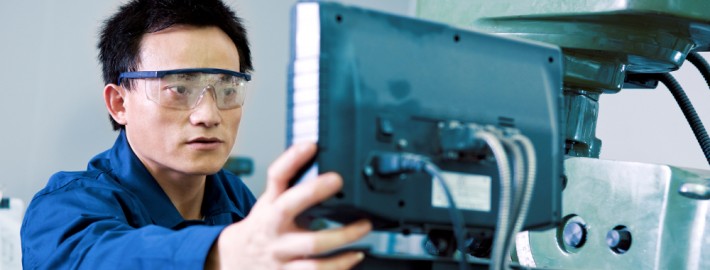Get Ready for the Industrial Internet
What happens when you add 200 years of the industrial revolution to 20 years of the Internet revolution? According to GE, the sum of these becomes the “Industrial Internet.” In a recent white paper, “Industrial Internet: Pushing the Boundaries of Minds and Machines,” authors Peter C. Evans and Marco Annunziata argue that a new wave of productivity gains is taking shape. How much of this Industrial Internet will depend on real-time cloud computing? Potentially quite a lot.
The Industrial Internet is a synergy arising from three increasingly intelligent players: devices, systems, and decision-making. As instrumentation grows smaller, lighter, and more ubiquitous, sensors and other devices are becoming more intelligent by incorporating microprocessors with digital capabilities. In this growing Internet of Things, far more sensor data is available than ever before, and this trend can only accelerate.
At the same time, networks that can move the data are getting faster and more robust, as broadband communication expands globally. The resulting “Big Data” that is starting to pour in from so many sources in industrial systems will provide the basis for “intelligent decisioning.”
Intelligent Decisioning
Intelligent decisioning works by applying advanced analytic methodologies to historical data in near-real-time, and combining it with streaming data inputs in real time. The results can be provided to strategic analysts and even control-room operators in summary or graphical formats, allowing them to make informed, split-second decisions in circumstances that previously may have depended on gut feelings or sheer guesswork.
“Intelligent Decisioning is the long-term vision of the Industrial Internet,” states the paper. “It is the culmination of the knowledge gathered as the elements of the Industrial Internet are assembled device-by-device and system-by-system. It is a bold vision that, if realized, can unlock productivity gains and reduce operating costs on a scale comparable to the Industrial and Internet Revolutions.”

GE works with big machines – locomotives, jet engines, power plants, wind turbines, and so on. They talk about “big things that spin”, all the engines, motors, turbines and other industrial equipment that has moving, rotating parts, over 3 million in total around the world. If the Industrial Internet can provide just a 1% improvement of efficiency in, for example, fuel economy for jet engines, that would translate into a savings of 2 billion dollars per year. Similar savings can be made on maintenance costs. And that’s just one area.
Combining manufacturing, transportation, healthcare, and other industrial activities in both developing and advanced economies, the combined value is over 30 trillion dollars, close to half of the current global economy. The paper demonstrates how the value of increasing the overall efficiency of those assets by a very small percentage can lead to huge gains in national and world economies. “Our analysis of the Industrial Internet’s potential impact in a number of key sectors suggests that its productivity-boosting potential should be at least comparable to that of the first wave of the Internet Revolution.”
What is needed to make this all work?
Of course, this will not all happen by itself. The authors point to three essential elements that must be developed:
1. Technological innovation and investment in sensors and user interfaces.
2. Security systems to protect sensitive data and intellectual property.
3. Highly trained and talented people to build and run the systems.
One key to the success of all three of these is the ability to move data quickly and securely from sensors and devices to the Big Data systems that will crunch the numbers, and then provide the results to the right people in the right way. Here is where we see real-time cloud computing fits in.
To gain a comprehensive view, data will need to be collected from a wide range of devices scattered across potentially large distances. It will need to be collected and integrated in real time, and then stored in such a way as to be immediately available on demand. In many cases this historical data will need to be integrated with real-time data coming in from similar or potentially different sources.
As demands flow into the system, it must respond rapidly to move the results of analysis to locations near and remote. Although real-time responsiveness may not always be required, a cloud based system that can respond to bursts of demand will be better positioned to meet the needs of mission-critical systems that are likely to be well-represented in the Industrial Internet.
Right now the infrastructure of the Industrial Internet is taking shape. We look forward to active participation in contributing our expertise in real-time cloud computing and industrial systems to help turn the vision into reality.





